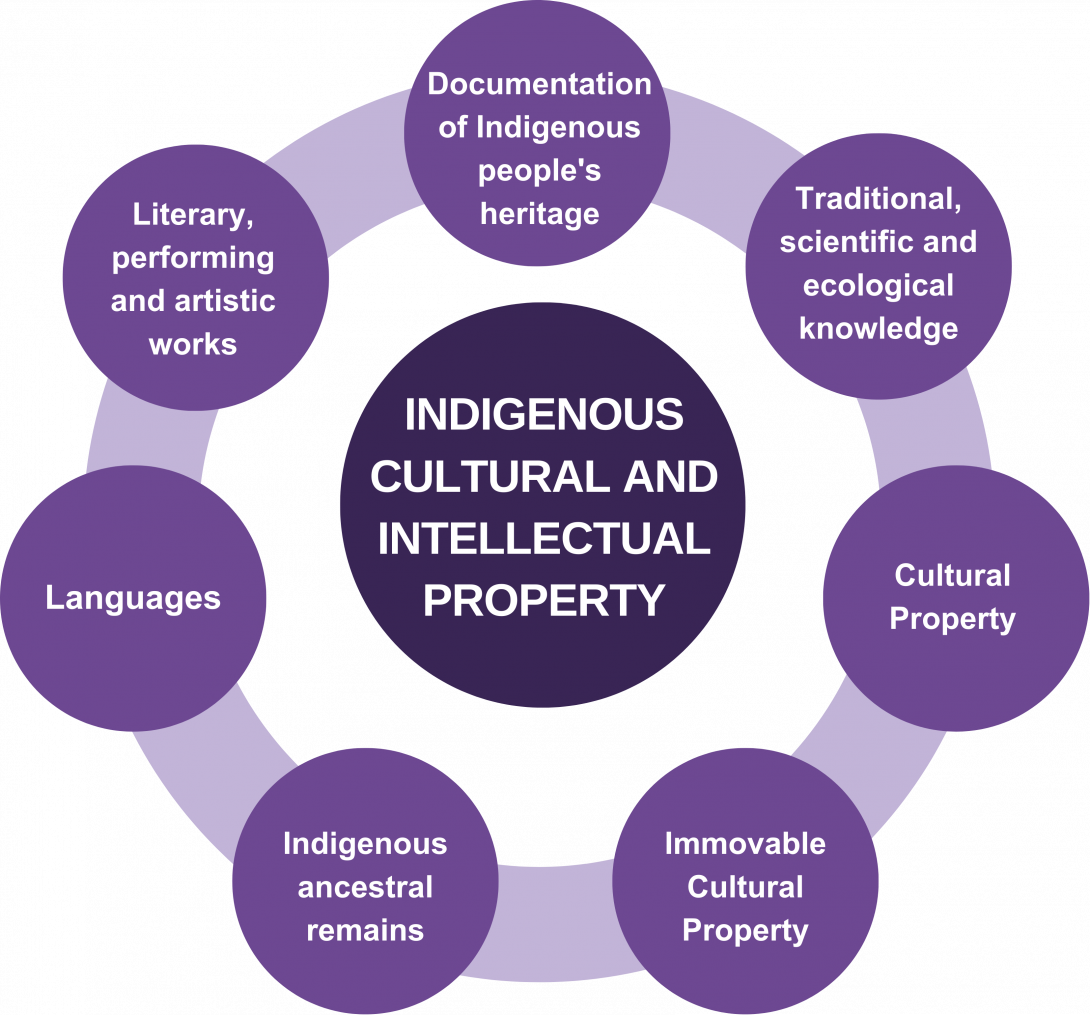What is and what isn’t Indigenous Cultural and Intellectual Property (ICIP)?
Indigenous Cultural and Intellectual Property (ICIP) is the traditional knowledge, traditional cultural expression, and cultural heritage of Indigenous peoples. The Library has developed a protocol to recognise the ICIP rights of First Nations people to be seen as primary guardians, interpreters and decision-makers of their heritage. Any item, regardless of format, that embodies, refers to, depicts or describes traditional knowledges or cultural practices is considered to contain ICIP.
Not all ICIP is secret and sacred and not all sensitive material is ICIP. For example, traditional tool making techniques might not be considered sensitive or restricted but is still ICIP as it embodies traditional cultural knowledge and practice. On the other hand, a photograph of a well-known Indigenous musician at a concert is not ICIP, but it might be considered highly sensitive if that person is now deceased.
Below are some examples of material that is considered to be ICIP and some that is not. These examples aim to help clarify the boundary between what is considered ICIP and what falls outside its scope. They are included to assist stakeholders to more accurately and confidently identify and manage ICIP materials according to the ICIP Protocol and other appropriate cultural and legal frameworks.
What is ICIP?
ICIP incorporates:

'Indigenous Heritage, Indigenous Cultural & Intellectual Property' sits in the middle circle with arrows pointing to 7 surrounding circles, starting at the top and moving clockwise:
- Documentation of Indigenous Heritage
- Traditional scientific & ecological knowledge
- Cultural property
- Immovable cultural property
- Ancestral remains
- Languages
- Literary performing & artistic works.
Examples of ICIP that you might find in the Library’s collections:
- Oral histories that recount the ancestral stories and cultural significance of a specific location
- Handcrafted items such as shields, baskets or carvings made using traditional methods that are specific to a First Nations group. This includes photographs and written descriptions of those objects
- Recordings of traditional First Nations songs performed during cultural ceremonies
- Locations, images and descriptions of sacred sites that are not intended for public knowledge
- Detailed accounts of traditional First Nations fishing techniques that are passed down through generations
- Specific ceremonial songs and dances that are restricted to certain members of the community.
What isn’t ICIP?
While ICIP can occur in material of any format and in any context, there are some types of material which are less likely to contain ICIP.
If cultural practice, traditional knowledge or cultural are expression are present or referred to in any of these items then it is considered ICIP. For example, if in a public interview a First Nations person refers to their language or the cultural practices of their family and community, then it does contain ICIP. If a fashion design incorporates traditional motifs that is ICIP.
Examples of material in the Library’s collections that generally don’t contain ICIP:
- Newspaper articles about or by First Nations individuals or events that do not disclose any sensitive or traditional cultural information
- Mainstream music or public performances by First Nations artists that are intended for commercial distribution and do not include traditional elements
- Research papers or reports by First Nations scholars on topics like public health or policy that do not involve traditional knowledge or practices
- Speeches given by First Nations leaders at public events on topics such as education or community development, which do not discuss or disclose traditional knowledge
- Photographs of landscapes or urban areas inhabited by First Nations peoples that do not specifically capture cultural or sacred sites
- Modern artworks or novels created by First Nations individuals that do not incorporate traditional symbols, stories, or methods specific to their cultural heritage
- A photograph of a famous First Nations athlete competing in or winning a race at a mainstream public sports event. Unless a photograph includes culturally significant symbols or ceremonies, it does not contain traditional knowledge or cultural expressions
- Clothing lines designed and manufactured by First Nations individuals that feature modern, non-traditional designs and are meant for general market consumption
- Recipes created by First Nations chefs that feature contemporary or fusion cuisine without any specific traditional ingredients or preparation methods linked to First Nations cultural practices